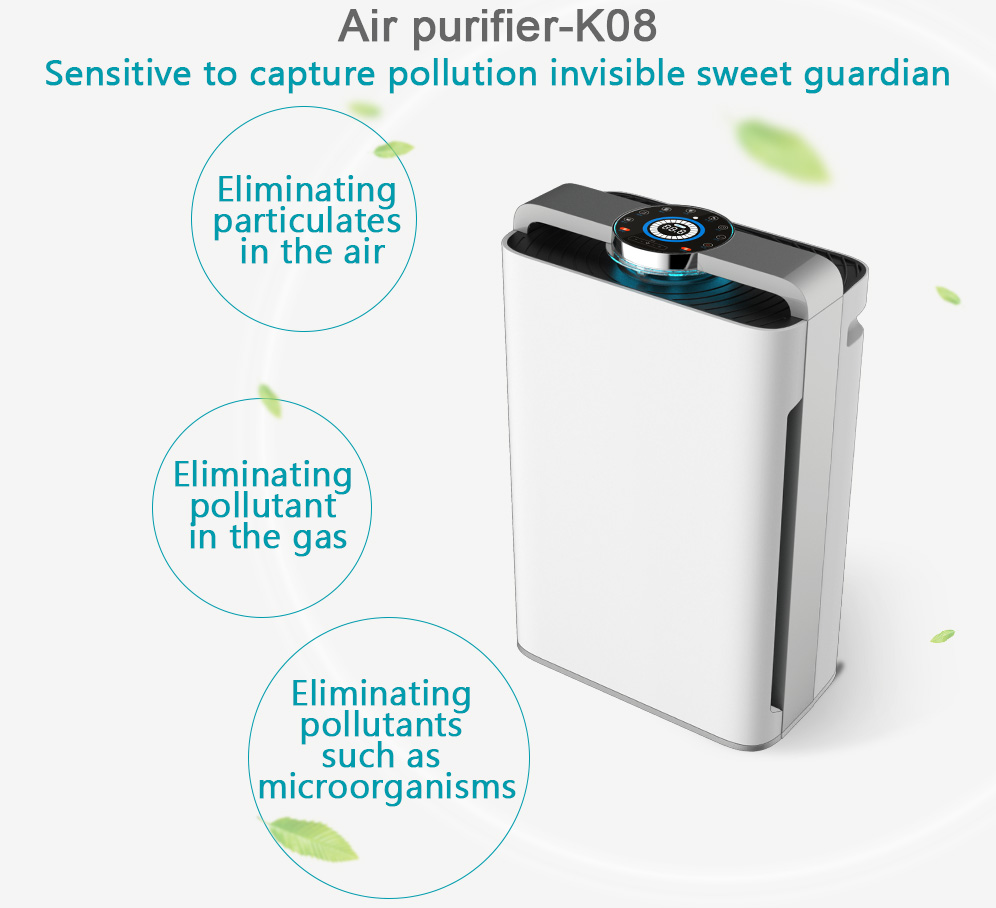Air pollution types and sources

First, the types of air pollutants
Air pollution is a product that has not been prevented in advance in the progress of modern civilization. It is the consequence of one or several pollutants stored in the atmosphere. The quantity and delay may damage human health.
‘Air pollutants’ are ‘materials in the air that are sufficient to directly or indirectly impair public health, or odorous substances that are sufficient to cause public dislike’. Air pollutants can be divided into two types: granular pollutants and gaseous pollutants depending on their nature:
- Granular pollutants:
(1) Suspended particles: particles with a particle size below 10 microns, also known as floating dust;
(2) Metal fumigation: solid particles containing metal oxides;
(3) Dark gray to black smoke with carbon particles as the main component;
(4) Acid mist: smoke containing droplets such as sulfuric acid, nitric acid, hydrochloric acid;
(5) Dust-collecting: substances with a particle size of more than 10 microns, which can be gradually dissipated by gravity and cause public dislike;
(6) Photochemical smog: A particulate matter produced by photochemical reactions that is suspended in the air and causes visual pathological obstacles.
- Gas pollutants:
(1) sulfur oxides;
(2) carbon monoxide;
(3) Nitrogen oxides;
(4) hydrocarbons;
(5) chlorine gas;
(6) Hydrogen chloride;
(7) fluoride gas;
(8) Chlorinated hydrocarbons;
(9) ammonia gas;
(10) Hydrogen sulfide;
(11) methyl sulfide;
(12) Mercaptans;
(13) methylamines;
(14) High-light chemical oxides;
(15) Formaldehyde;
(16) hydrogen cyanide;
(17) Other gaseous pollutants.
Second, the source of air pollutants
There are quite a lot of sources of air pollutants. The air pollutants produced by natural phenomena such as forest fires, swamps, plant decay, dust and volcanic eruptions are called ‘natural air pollutants’. Air pollutants produced by human activities are called ‘artificial air pollutants.’
- Natural air pollutants:
(1) Forest fires produce large amounts of pollutants such as soot, unburned hydrocarbons, carbon monoxide, nitrogen oxides and ash;
(2) Produce pollutants such as methane and hydrogen sulfide in the marshes;
(3) The decay of animals and plants produces nitrogen-containing pollutants;
(4) Volcanic eruptions produce many particulate matter and gaseous pollutants such as sulfur dioxide, hydrogen sulfide, and methane.
- Artificial air pollutants
(1) Industrial pollution: Contaminants that may be produced by the manufacturing process of raw materials, such as hydrogen chloride, ammonia, chlorine, lead, cadmium, particulate pollutants, etc.; burning with coal, gasoline, heavy oil, firewood, etc. Produces sulfur dioxide, nitrogen oxides, carbon monoxide, carbon dioxide, and particulate pollutants.
(2) Public facilities: such as power plants, garbage and sewage treatment facilities may also be accompanied by pollutants such as sulfur dioxide, nitrogen oxides, hydrogen chloride and odors.
(3) Personal behavior: If you use cars, household stoves, smoking, open burning of garbage branches, etc., carbon monoxide, hydrocarbons, nitrogen oxides, and particulate pollutants will be produced.
If you are interested in this, please contact us for more products and preferential prices
Helen:
+86 13922346046
info@olansiglobal.com
https://www.olansiglobal.com